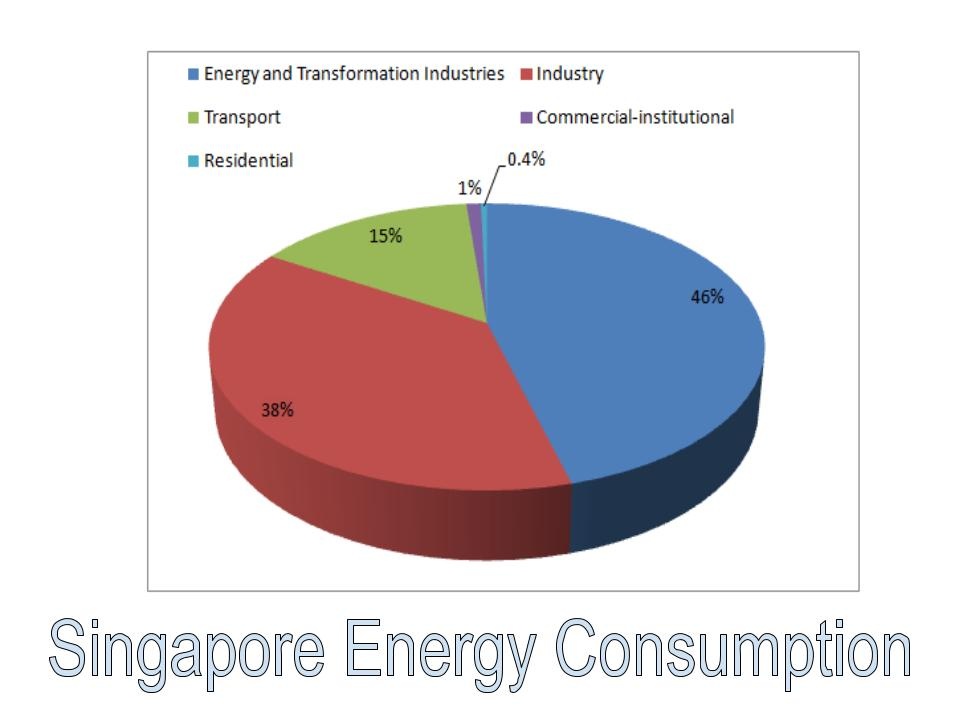
Uploaded on 2016-03-17 by leonghua13
Currently, about 95 percent of Singapore's electricity is generated using natural gas. A portion of this natural gas is piped from Indonesia and Malaysia. To ensure that Singapore will have reliable and secure energy to supplement its gas supplies, a Liquefied Natural Gas (LNG) terminal on Jurong Island commenced operations in May 2013. (Source: http://www.energyportal.sg/Energy101/types-of-energy.html) IEA Sankey report shows Singapore import and export a lot of oil and petroleum products. This is because Singapore is a major trading and refining centre in the world. 2 Where are the dominant fossil fuels mainly used for in your country? (e.g. transport, industry, non-energy use etc.) Total final energy consumption Singapore’s total final energy consumption (TFEC) fell by 6.5% to 13,425 ktoe in 2013. The demand of petroleum products experienced a decline of around 13% to 8,136 ktoe, while consumption of electricity and natural gas increased by 1.6% (to 3,863 ktoe) and 15% (to 1,298 ktoe) respectively. The majority of TFEC was in the form of petroleum products (61% or 8,136 ktoe), followed by electricity at 29% (3,863 ktoe) and natural gas at 9.7% (1,298 ktoe). Almost two-thirds (65% or 8,779 ktoe) of TFEC was attributed to the industrial-related sector, predominantly in the form of petroleum products (5,886 ktoe) and electricity (1,619 ktoe). Consumers in the transport-related and commerce and services-related sectors accounted for 18% (2,355 ktoe) and 12% (1,596 ktoe) of end-use consumption respectively. The transport-related sector consumed mainly petroleum products (2,133 ktoe), while the commerce and services-related sector mostly consumed electricity (1,428 ktoe). Households accounted for 4.9% (664 ktoe) of total energy consumption, primarily in the form of electricity (582 ktoe) and natural gas by way of town gas (52 ktoe). [Source:https://www.ema.gov.sg/cmsmedia/Publications_and_Statistics/Publications/ses/2015/energy-consumption/index.html] 3 new policy As a tropical country, Singapore has the advantage of using solar energy. There are already some experiments in this area. However, due to technology and expertise, use of solar energy is still in a slow path. The government should consider giving more incentives and R&D to improve the capacity and know-how. However, when we look at the total energy consumption, household consumption (see pie chart) is only a small user. Industrial and energy (electricity) are the main sectors for energy consumption. Transport is the third. Hence, energy saving is still an important consideration. The more we save, the less energy we use. So, incentives for energy saving should be given out. ![][1] [1]: https://edxuploads.s3.amazonaws.com/14581982841705001.jpg